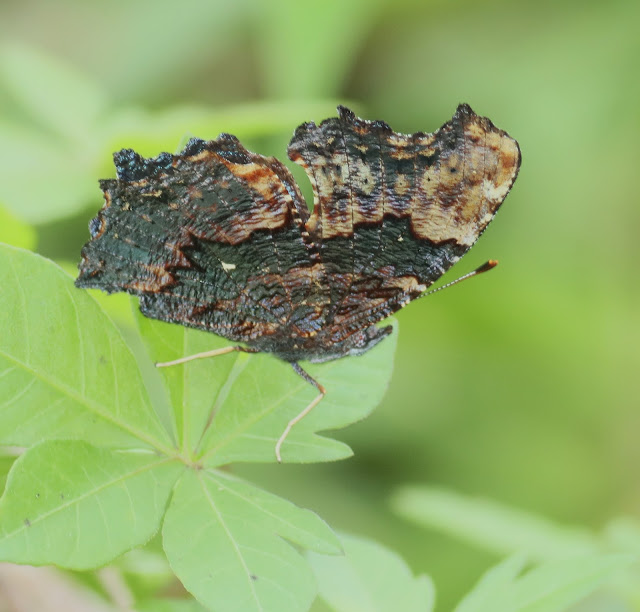Another new year and hopefully another better year. Weather has been sunny and windy lately. Good time to see more butterflies. According to the Chinese lunar calendar, 2022 is the year of the Tiger. So I will start off with a photo of a "tiger".
Plain Tiger (Danaus chrysippus chrysippus)
Although this butterfly moves slowly but it is not palatable to most predators due to its toxic contents in its wings.
Blue Dandy (Laringa castelnaui)
Two males were seen and both are likely the same ones seen on September 2021.
Shadow play by Blue Dandy
From the markings indicated, the above butterfly should be a "Metallic Cerulean" (Jamides alecto ageladas). It's larger than most Jamides and its an uncommon butterfly.
Finally it did appear again after a long absence.
It was last seen in July 2021.
Luckily for me it came out in the open areas.
This is another mega and rare butterfly.
Banded Royal (Ranchana jalindra burbona)
This is a very skittish butterfly. Each step I took to move closer it will fly deeper into the forest.
This i believe is a "White Tipped Baron" (Euthalia merta merta - Moore)
This is also not a very common butterfly.
Common Duffer (Discophora sondaica despoliata)
This is another seldom seen butterfly due to its cryptic habit of coming out only at dawn or late evenings.
Plains Cupid (Chilades pandava pandava)
Malayan Punchinello (Zemeros emesoides)
White-banded Flat (Celaenorrhinus asmara asmara)
This is what happen if we forget to switch the system from birding mode to butterfly mode.
The above is a Banded Angle (Odontoptilium pygela). It was still a lifer for me despite the blurry photo.
This one looks like a Peninsular Ace (Halpe peletronix peletronix)
Junonia hedonia ida (Chocolate Soldier) - top view
Junonia hedonia ida (Chocolate Soldier) - side view
The following female butterflies might look different but they are actually from the same species. Just learnt from the more experienced butterfly spotters that there is only a tiny difference as indicated in the photos below.
This is a female Common Archduke (Lexias pardalis dirteana)
The difference between this female Archduke and a female Yellow Archduke is that the markings in the female Archduke is split (as per circle) while the markings for a female Yellow Archduke is a straight line.
I came across a bunch of caterpillars of the Banded Swallowtail (Papilio demolion demolion) This time there were 11 of them. These caterpillars are probably in their 3rd or 4th instar stages.
A few days later I went back to check their status and found that their host plant leaves have all dried out.
The depleted condition of their host plant.
From the almost dried leaves I managed to rescue three of them and out of the three, only one survive till its 5th instar stage.
5th instar stage of the Banded Swallowtail
Lastly I have also came across this unique but nasty wasp. Have seen this wasp carrying caterpillars.
HOPE TO SEE AND POST MORE BUTTERFLIES SOON !


























.JPG)